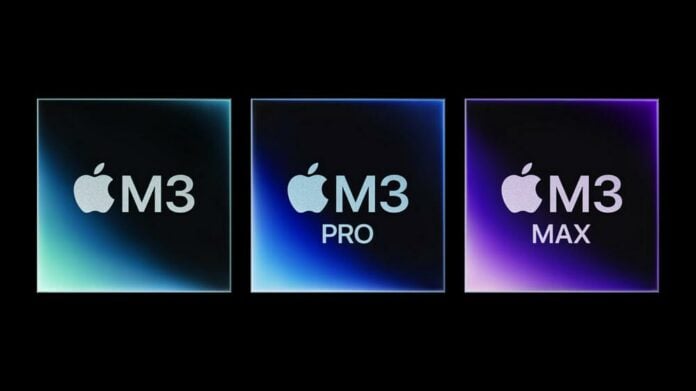Apple has announced its M3 chips family boasting faster cores alongside more memory, all while being energy efficient.
Housing 25, 37, and 92 billion transistors, respectively, the M3, M3 Pro, and M3 Max chips are built using the 3nm process, allowing Apple to pack more cores all while keeping high power efficiency.
Apple talks about 2.5 times faster GPU rendering in addition to big advancements in GPU performance, thanks to the so-called Dynamic Caching which uses real-time hardware memory allocation to improve GPU utilisation – especially handy for most demanding tasks and games. Moreover, the new GPU features AV1 decode plus hardware-accelerated ray tracing and mesh shading.
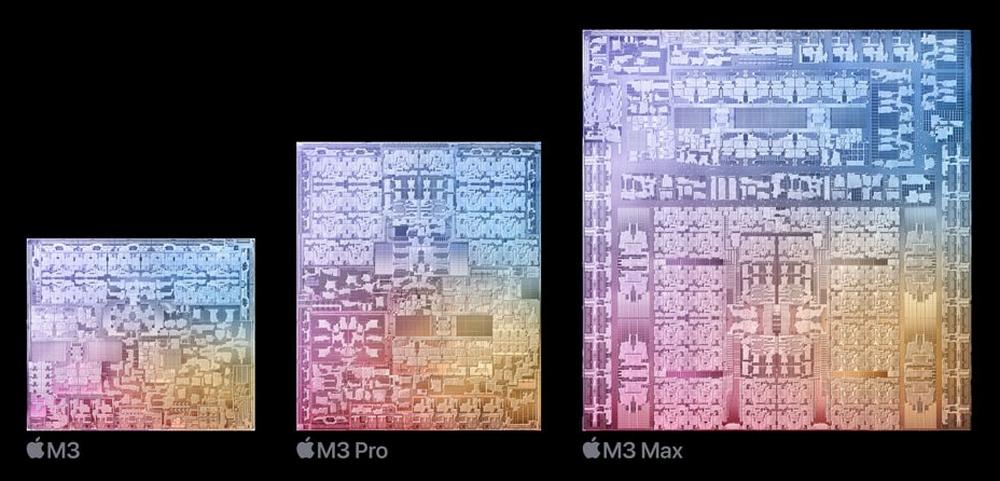
The M3 can be configured with up to eight CPU cores, 10 GPU cores, and 24GB of unified memory, while the M3 Pro takes things a bit further to 12 CPU cores (6-P + 6-E), 18 GPU cores, and 36GB of memory. But this is nothing compared to the M3 Max’s massive 16 CPU cores (12-P + 4-E), 40 GPU cores, and 128GB of memory.
For reference, the M2 Max topped at 96GB of RAM accompanied by fewer cores built on a 5nm node.
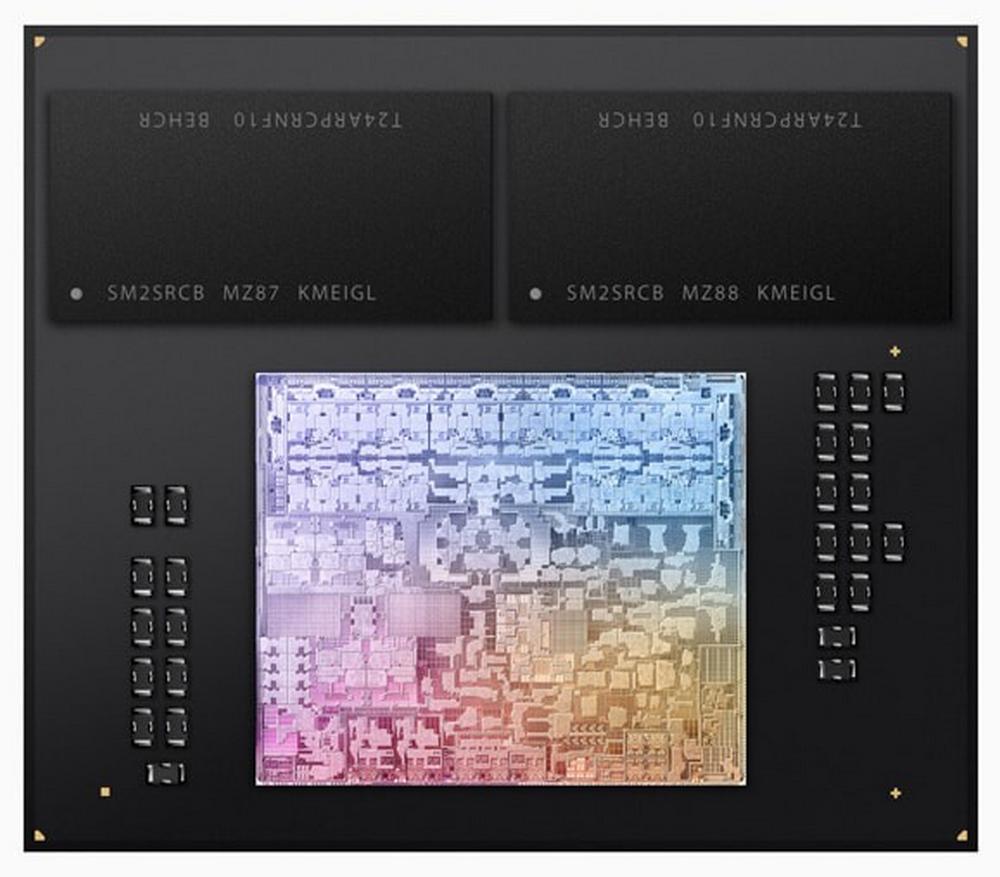
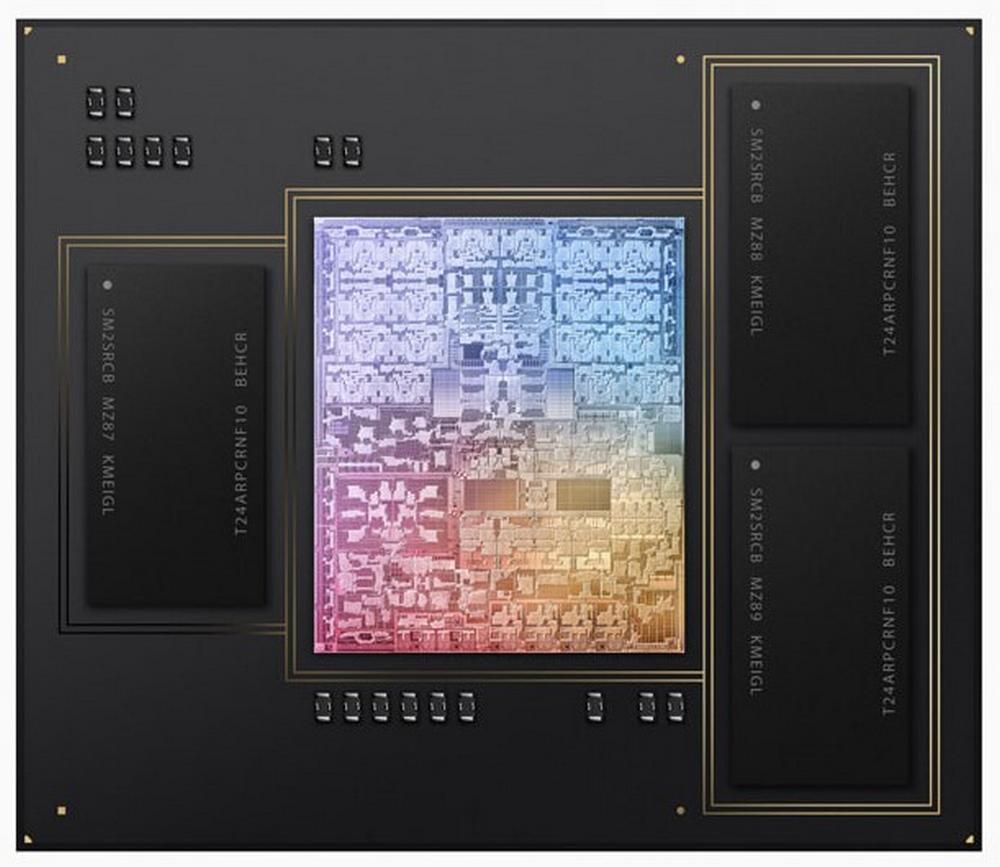
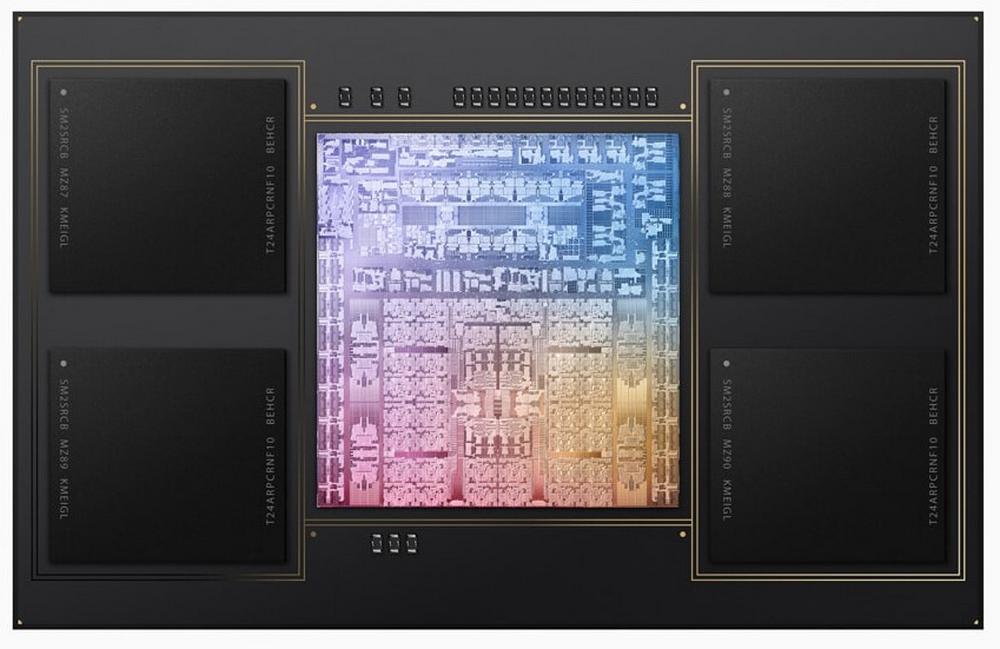
Apple claims that the new M3 Pro chip has a 20 per cent faster CPU and 40 per cent better GPU than the M1 Pro, with the M3 Max announced as, respectively, 80 per cent and 50 per cent faster than an M1 Max. Against last year’s M2 Max, the new M3 Max still holds its ground with a claimed 50 per cent CPU and 20 per cent GPU uplift.
Keep in mind that a portion of these performance gains are probably resulting from the increased core counts. Not a bad thing by itself, just good to know.
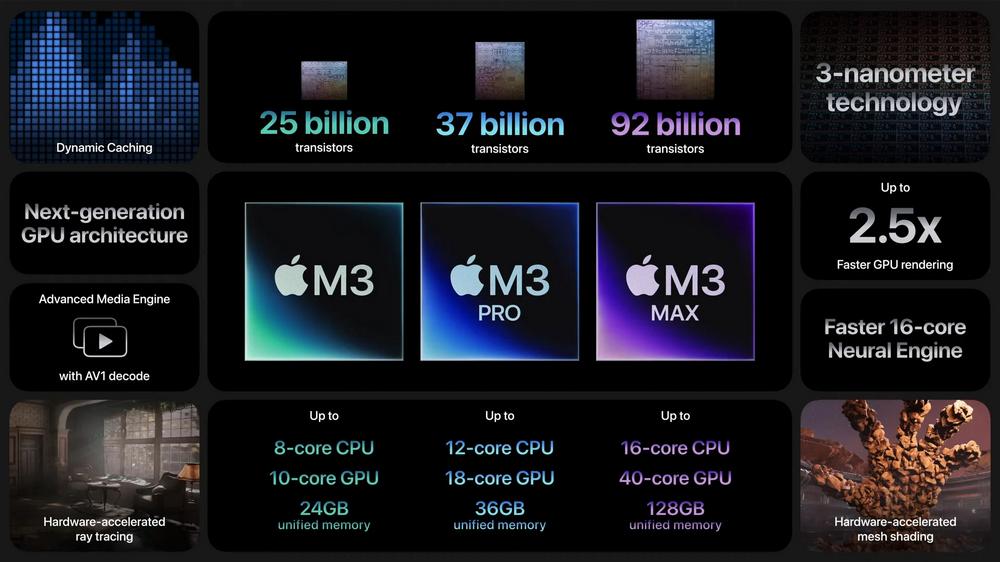
These chips will be found on the new 14in MacBook Pro machines starting at £1,699 and 16in MacBook Pro starting at £2,599, respectively packing 8 CPU cores, 10 GPU cores, 8GB of memory, plus 512GB of SSD storage, and 12-CPU cores, 18 GPU cores, 18GB of memory, plus 512GB of SSD storage.
However, if you have deep pockets, you can go as high as £7,299 for a fully-decked-out MacBook Pro boasting 16 CPU cores, 40 GPU cores, 128GB of memory, and 8TB of storage. Note that at least for now, the 16in models don’t offer a basic M3 version.
MacBook Pro models with the M3 and M3 Pro chips are launching next week, with M3 Max machines scheduled for later in November.
This leap isn’t as large as from M1 to M2, by the looks of it, and with Apple comparing M3 to M1 more often than not, the laws of diminishing returns rears its head. Apple usually gives the best CPUs a run for their money despite targeting different audiences, so it’ll be interesting to see how they stack up once benchmarks land.


